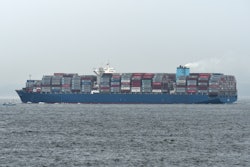
Volatility, uncertainty, complexity and ambiguity (VUCA) factors are now the norm in the modern business environment, where supply chains are critical connectors between producers and consumers.
The stakes are high and companies must make the right supply chain decisions or risk being left behind. Navigating the complexity of today’s supply chain requires utilizing converging technologies such as artificial intelligence (AI), machine learning (ML), decision science and operations research for more informed, data-driven decisions.
However, leveraging these components requires more than composable technology and industry prowess; it also takes strategic alignment with the organization’s objectives and processes. The good news is that there are tested strategies that companies can use to improve supply chain decision-making and embrace volatility.
Here are ways companies can develop a systemic strategy for technological and procedural advancements in supply chain design and planning.
Embrace volatility and uncertainty. While these forces have always been a part of supply chain management, external factors and today’s geopolitical and economic conditions have increased the uncertainty and the need to adapt more quickly to changing market conditions. VUCA isn’t going away, so companies need to rethink their current supply chain decision-making approaches.
Make intelligent trade-offs: Within supply chains, many companies are still solving for a single objective like lowest cost, a specific service level or another single data point to show alignment with supply chain goals. Supply chain decision-makers need to understand the impacts of their decisions on competing forces (e.g., profits, service, sustainability, resiliency, etc.) and make the one that best aligns with their goals. There’s no one perfect answer.
Identify, prioritize and isolate decisions. Businesses need to identify the decisions that will have the most impact on their supply chain goals and prioritize them. External experts may help internal teams uncover the composition of their decisions and guide them towards discovering which components of each decision have the most impact to driving value in their company.
Orchestrate decisions across time horizons. A critical misstep many organizations make is focusing on decisions in a single time horizon. This mindset presents a challenge because the impact of a decision leads to a ripple effect across the supply chain. For example, suppose a strategic design decision places a warehouse in a new location, but planners and warehouse managers aren’t aware of the timeline. The tactical decisions influencing inventory allocation across the new network will be of poor quality in that case.
Understand cause and effect. Companies must use decision science to fully understand and predict outcomes based on how the decision flows through the rest of the supply chain and affects other activities. By modeling decision impacts, they can make higher quality decisions across time horizons. And make better informed trade-offs across competing objectives.
Team with experts with deep domain knowledge to de-risk projects. With supply chains dealing with constant disruptions, companies need trusted advice from experts who can offer proven industry insights. When supply chain decisions are driven solely by AI or other technology without advisors to align with the nuances of your businesses, the full impact of decisions is uncertain.
Continuously recalibrate decisions, policies and triggers.
It’s imperative that supply chain leaders continually assess the quality of their decisions that influence supply chain outcomes and identify opportunities for enhancement. This transformative path demands a comprehensive understanding of business strategy and vision, internal operations, and external influences, ensuring that decisions are informed, data-driven and aligned with business objectives.
Supply chain success in today’s VUCA environment requires a robust approach, combining the agility to adapt to changing circumstances with insight to set strategic goals and the wisdom to leverage and adopt emerging technologies.
The road to achieving a future-ready supply chain is demanding, but it will provide a competitive advantage in the ever-changing business landscape.



















